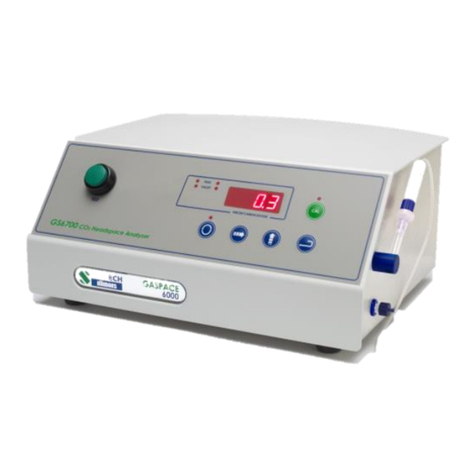www.systechillinois.com
Table of Contents
1.0 INTRODUCTION .................................................................................................................1
1.1 BRAND...................................................................................................................................... 1
2.0 PRINCIPLE OF OPERATION.............................................................................................2
3.0 INSTALLATION ..................................................................................................................3
3.1 VOLTAGE INPUT/FUSE CARTRIDGE..................................................................................... 3
3.2 CONNECTING GAS LINES...................................................................................................... 3
3.3 INSTALLATION OF COMM PORTS CONTROLLER................................................................ 4
4.0 SOFTWARE ........................................................................................................................5
4.1 SYSTEM REQUIREMENTS...................................................................................................... 5
4.2 INSTALLATION......................................................................................................................... 5
4.3 CONNECTING THE INSTRUMENT ......................................................................................... 8
5.0 BASE LINE AND SYSTEM CALIBRATION.......................................................................9
5.1 BASE LINE................................................................................................................................ 9
5.2 HISTORY OF BASELINE........................................................................................................ 14
5.3 SYSTEM CALIBRATION......................................................................................................... 15
5.4 PREPARATION FOR CALIBRATION..................................................................................... 15
5.4.1 Package Calibration...............................................................................................................15
5.4.2 Gas calibration.......................................................................................................................15
5.5 STARTING THE CALIBRATION............................................................................................. 16
5.6 HISTORY OF CALIBRATION ................................................................................................. 19
6.0 PERMEATION TESTS ......................................................................................................20
6.1 BOTTLE PREPARATION........................................................................................................ 21
6.2 COMPLETE PACKAGES ADAPTOR PREPARATION........................................................... 23
6.3 DELAY ADAPTOR FITTING................................................................................................... 26
7.0 PERFORMING A TEST.....................................................................................................27
7.0.1 Notes on Settle to Proceed and Auto Stop ..............................................................................32
7.1 STARTING A TEST ................................................................................................................ 33
7.2 STOPPING A TEST................................................................................................................ 37
8.0 REPORT GENERATION...................................................................................................38
9.0 FILE GENERATION..........................................................................................................42
9.1 DATA FILES............................................................................................................................ 42
9.2 DIAGNOSTIC FILES............................................................................................................... 42
9.3 O2 TRACE FILES................................................................................................................... 42
9.4 SETUP FILES......................................................................................................................... 42
9.5 TEMPERATURE FILES.......................................................................................................... 42
10.0 TROUBLESHOOTING ......................................................................................................42
10.1 OTR READINGS ARE HIGH................................................................................................. 43
10.1.1 Test with loops/blanks..........................................................................................................43
10.2 OTR READINGS ARE LOW. ................................................................................................ 46
10.3 NO POWER.......................................................................................................................... 46
11.0 ACCESSORIES AND REPLACEMENT PARTS..............................................................47
12.0 MAINTENANCE AND WARRANTY .................................................................................49
12.1 MAINTENANCE.................................................................................................................... 49
12.2 WARRANTY.......................................................................................................................... 49
12.3 RETURNING THE INSTRUMENT FOR REPAIR ................................................................. 49
13.0 TECHNICAL SPECIFICATIONS.......................................................................................50




























